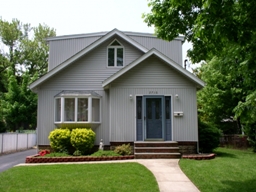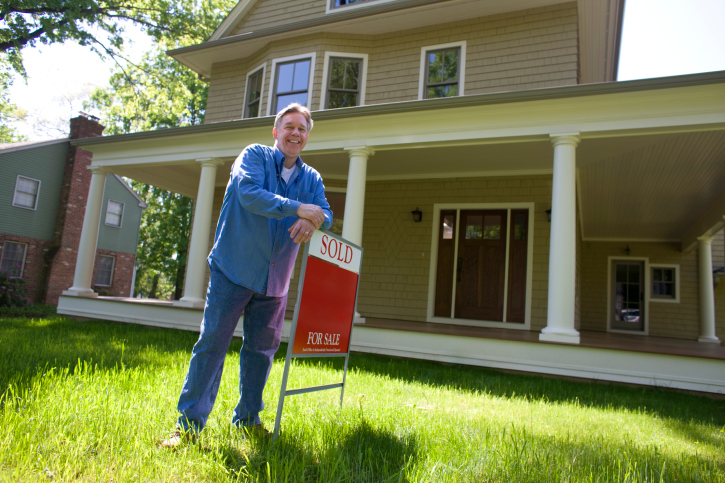 S & P Case-Shiller Home Price Indices reported the fastest pace of U.S home price growth in seven years. National home prices grew by 10.40 percent year-over-year in December as compared to November’s reading of 9.50 percent home price growth on a year-over-year basis.
S & P Case-Shiller Home Price Indices reported the fastest pace of U.S home price growth in seven years. National home prices grew by 10.40 percent year-over-year in December as compared to November’s reading of 9.50 percent home price growth on a year-over-year basis.
The S&P Case-Shiller 20-City Home Price Index reported home price growth in 18 of 20 cities included in the index. Detroit, Michigan did not report home price data for December. Phoenix, Arizona held the top position in the 20-City Index for the 19th consecutive month with year-over-year home price growth averaging 14.40 percent. Home prices in Seattle, Washington home prices held second place with year-over-year growth of 13.60 percent. San Diego, California home prices grew 13.00 percent year-over-year.
The Federal Housing Finance Agency released home price data for homes owned or financed by Fannie Mae and Freddie Mac. Home prices rose by 10.80 percent in the fourth quarter of 2020 as compared to home prices in the fourth quarter of 2019. Home prices reported by FHFA rose by 3.80 percent between the third and fourth quarters of 2020.
Idaho home prices reported by FHFA rose by 21.10 percent year-over-year. Montana home prices grew by 15.50 percent; Utah followed closely with 15.40 percent home price growth. FHFA reported the highest pace of home price growth for cities in Boise, Idaho; home prices in San Francisco, California grew at the slowest pace. This data supports the trend of homeowners moving from costly metro areas to inland suburbs where they can buy larger homes for lower prices.
Rapidly Rising Home Prices Impact Affordability
While homeowners welcome quickly rising home prices, affordability issues worry real estate analysts and prospective home buyers. The covid-19 pandemic caused home prices to rise as homeowners fled congested urban areas for suburban and rural areas.
Supplies of available homes fall as demand for homes keeps rising during the pandemic. Millennials are in their peak home-buying years but many current homeowners are waiting out the pandemic to sell. Low inventories of available homes and rising building materials costs add to the shortage of homes in general and affordable homes in particular.
First-time and moderate-income home buyers face increasing challenges as home prices and mortgage rates rise. Mortgage approval standards are difficult to meet as rising home prices cause housing payments and down payment requirements to increase. In addition to property taxes and hazard insurance, buyers who cannot pay 20 percent down must also pay for mortgage insurance.
Skyrocketing home prices should ease when demand for homes slows, but that won’t happen until supplies of available homes catch up to buyer demand.
 Last week’s scheduled economic news included reports on new and existing home sales, the FHFA House Price Index, weekly reports on mortgage rates, and new jobless claims. The week finished with a report on consumer sentiment.
Last week’s scheduled economic news included reports on new and existing home sales, the FHFA House Price Index, weekly reports on mortgage rates, and new jobless claims. The week finished with a report on consumer sentiment. Sales of previously owned homes dropped in August by 4.80 percent on an annual basis for the first time in four months; the dip was likely caused by rising home prices. August sales were reported at a rate of 5.31 million; July’s rate was 5.58 million sales of previously owned homes.
Sales of previously owned homes dropped in August by 4.80 percent on an annual basis for the first time in four months; the dip was likely caused by rising home prices. August sales were reported at a rate of 5.31 million; July’s rate was 5.58 million sales of previously owned homes. Last week’s economic news included several reports related to housing. The Case-Shiller 20-City Home Price Index for June rose to 4.50 percent as compared to May’s reading of 4.40 percent. Denver, Colorado was the only city to post double-digit year-over-year growth. FHFA also released its House Price Index for June. Home prices for properties associated with mortgages owned or backed by Fannie Mae and Freddie Mac rose at a year-over-year rate of 5.60 percent in June as compared to May’s reading of 5.70 percent.
Last week’s economic news included several reports related to housing. The Case-Shiller 20-City Home Price Index for June rose to 4.50 percent as compared to May’s reading of 4.40 percent. Denver, Colorado was the only city to post double-digit year-over-year growth. FHFA also released its House Price Index for June. Home prices for properties associated with mortgages owned or backed by Fannie Mae and Freddie Mac rose at a year-over-year rate of 5.60 percent in June as compared to May’s reading of 5.70 percent. Denver, Colorado continues to woo homebuyers as home prices rose by 10.20 percent as of June according to the Case-Shiller 20-City Home Price Index. The Mile-High City was the only city included in the index that posted double-digit year-over-year growth in June. San Francisco, California posted a 9.50 percent year-over-year gain in home prices and Dallas, Texas rounds out the top three cities posting highest year-over-year home price growth with a reading of 8.20 percent.
Denver, Colorado continues to woo homebuyers as home prices rose by 10.20 percent as of June according to the Case-Shiller 20-City Home Price Index. The Mile-High City was the only city included in the index that posted double-digit year-over-year growth in June. San Francisco, California posted a 9.50 percent year-over-year gain in home prices and Dallas, Texas rounds out the top three cities posting highest year-over-year home price growth with a reading of 8.20 percent. Last week’s economic events included a number of readings on housing related topics. The National Association of Home Builders released its report on builder confidence in housing markets, Housing starts reached their highest level since the great recession, and existing home sales exceeded expectations and the prior month’s reading. The Federal Reserve released minutes for its most recent FOMC meeting, which indicated that while a majority of FOMC members are leaning toward raising the Fed’s target federal funds rate, concerns over certain aspects of the economy continue to keep the Fed from citing a date for raising its target interest rate.
Last week’s economic events included a number of readings on housing related topics. The National Association of Home Builders released its report on builder confidence in housing markets, Housing starts reached their highest level since the great recession, and existing home sales exceeded expectations and the prior month’s reading. The Federal Reserve released minutes for its most recent FOMC meeting, which indicated that while a majority of FOMC members are leaning toward raising the Fed’s target federal funds rate, concerns over certain aspects of the economy continue to keep the Fed from citing a date for raising its target interest rate.